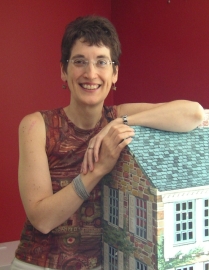
Toys and dollhouses are not just ´Play/Things´

"Play/Things: Toys and the Invention of Modern Childhood," an exhibit featuring children´s toys, beautiful dolls and exquisite dollhouses, explores the intersection between the history of architecture and the history of childhood. "When people see these toys, many will think about the Industrial Revolution and mass-production," co-curator Art History Professor Abigail A. Van Slyck said of the exhibit. "But I am trying to get people to think about why there was such a demand for toys like this, and why they were mass-produced. I am trying to put the ´demand´ side back into understanding."
While the exhibit appeals to the young and the young at heart, it encourages adult viewers to reflect on the larger cultural role toys have played in perpetuating modern notions of a good and happy childhood that emerged in the late 19th century. It also focuses on how house itself became an object of play and demonstrates how toys were domesticated. "A lot of play started to happen indoors," Van Slyck said. "Outside toys were miniaturized to fit indoors, like table-top croquet." These indoor toys also helped create a new identity for the emerging middle class. "Middle class families were able to distinguish themselves from workers by controlling how their children played. I think this says a lot about the culture at the time," she said.
The exhibit is on display through Sept. 12 at the Lyman Allyn Art Museum located just south of campus at 625 Williams St. The museum is open Tuesday-Saturday, 10 a.m.-5 p.m., and Sunday, 1-5 p.m. For more information call 860-443-2545 or visit www.lymanallyn.org.
August 3, 2010
